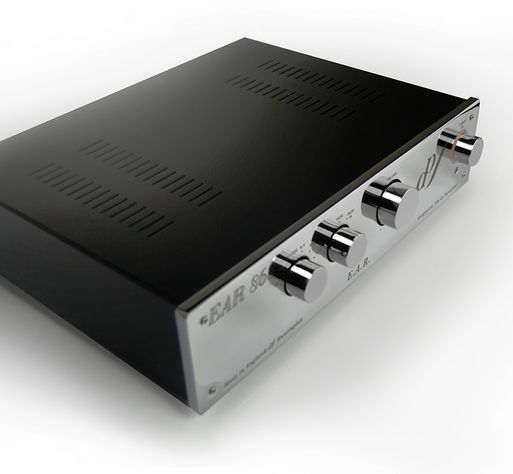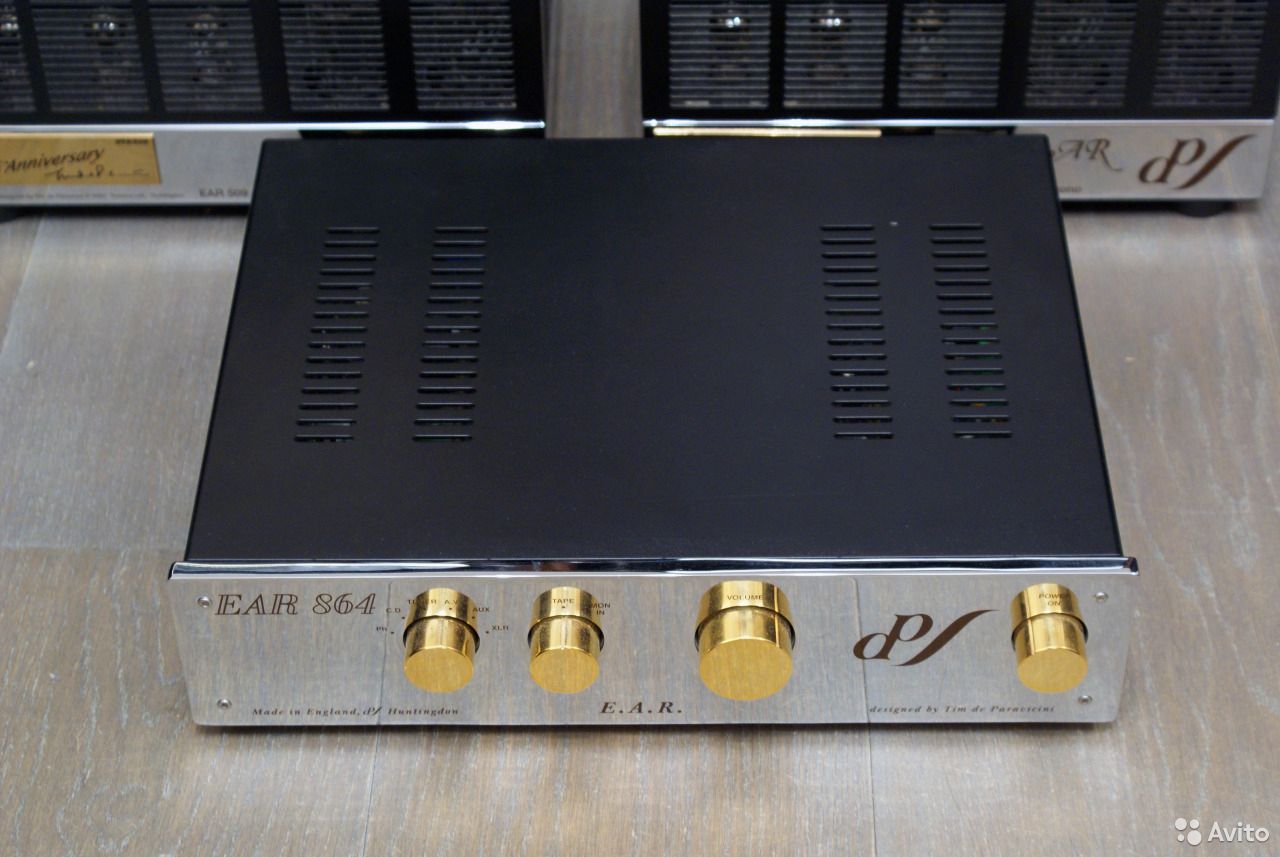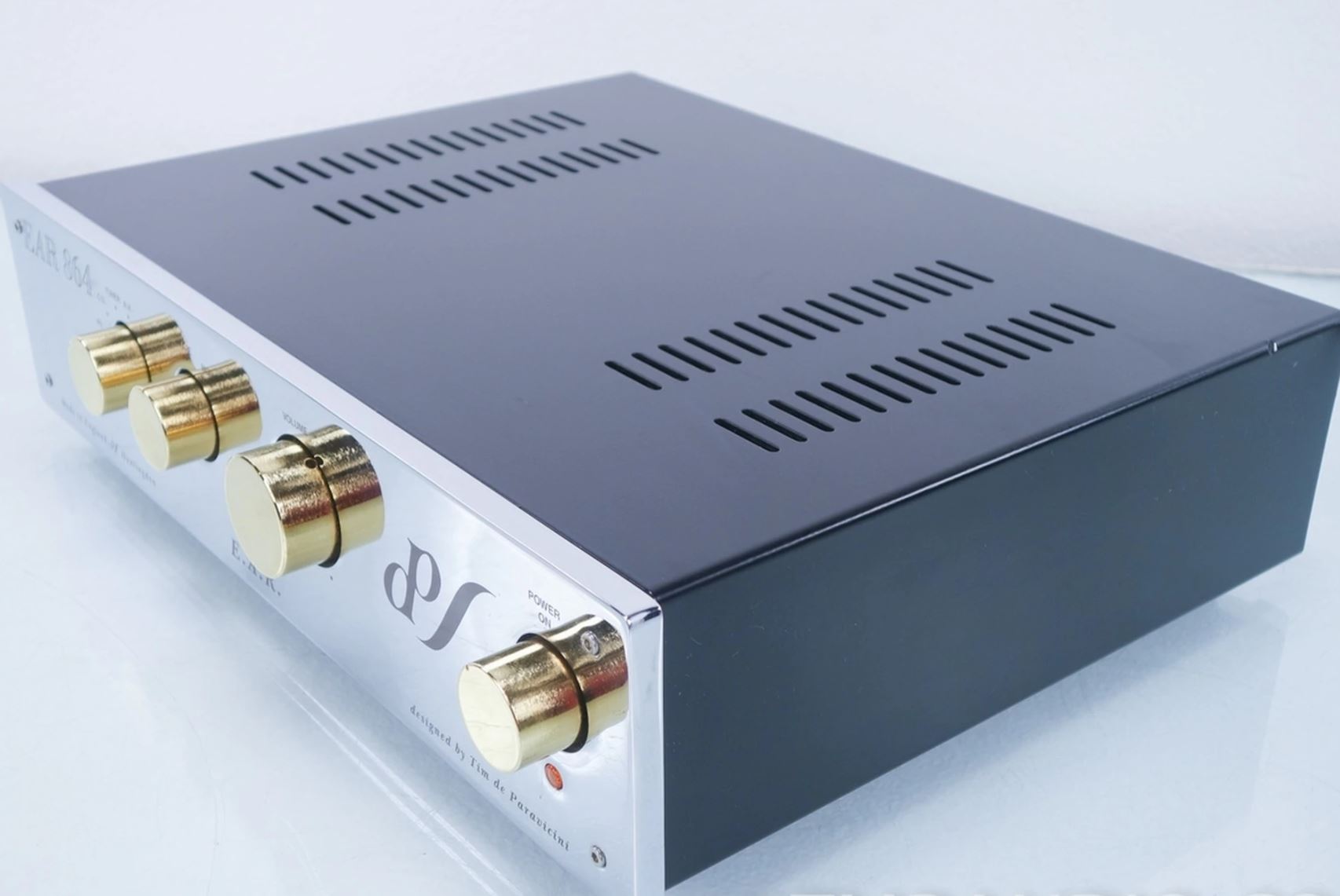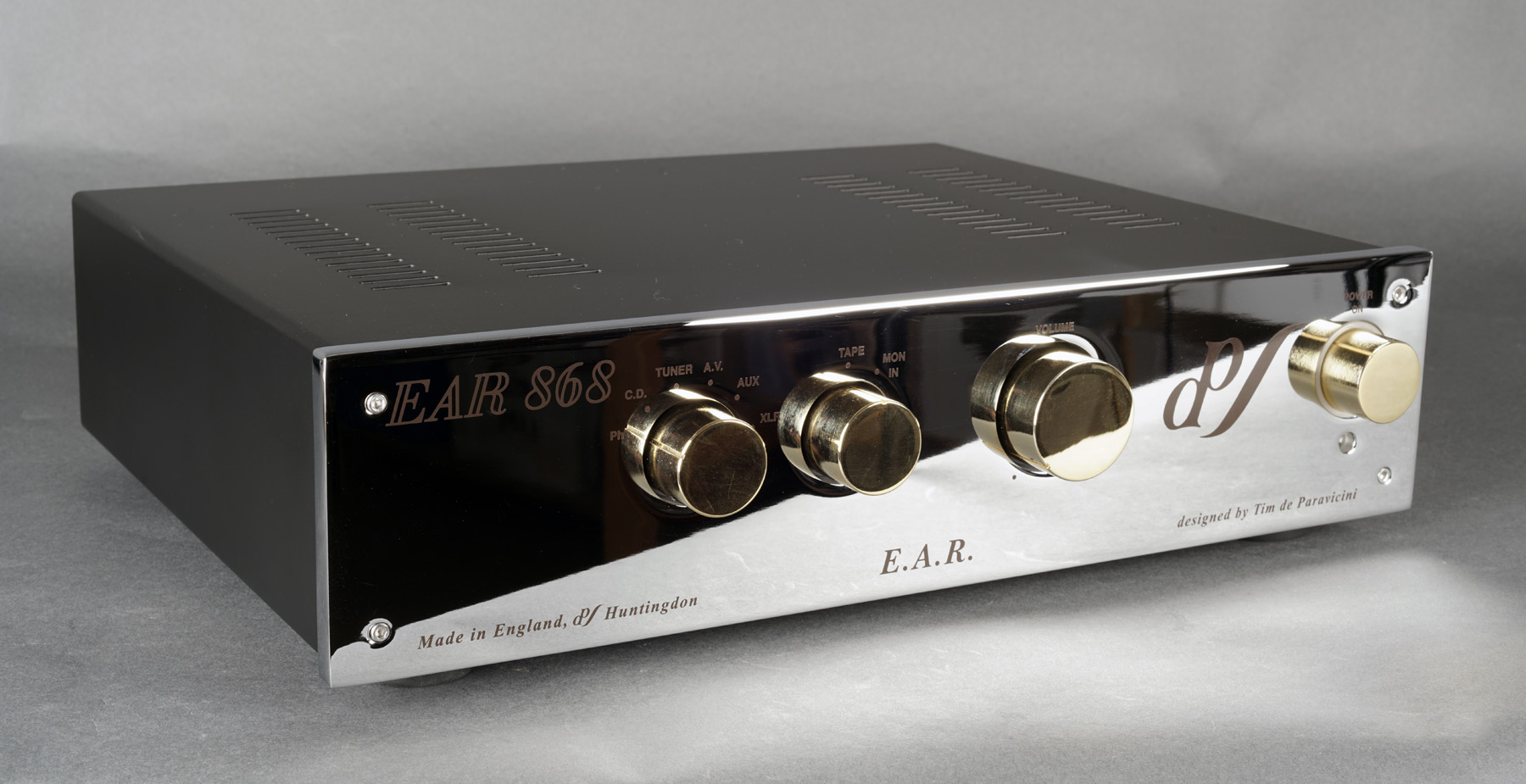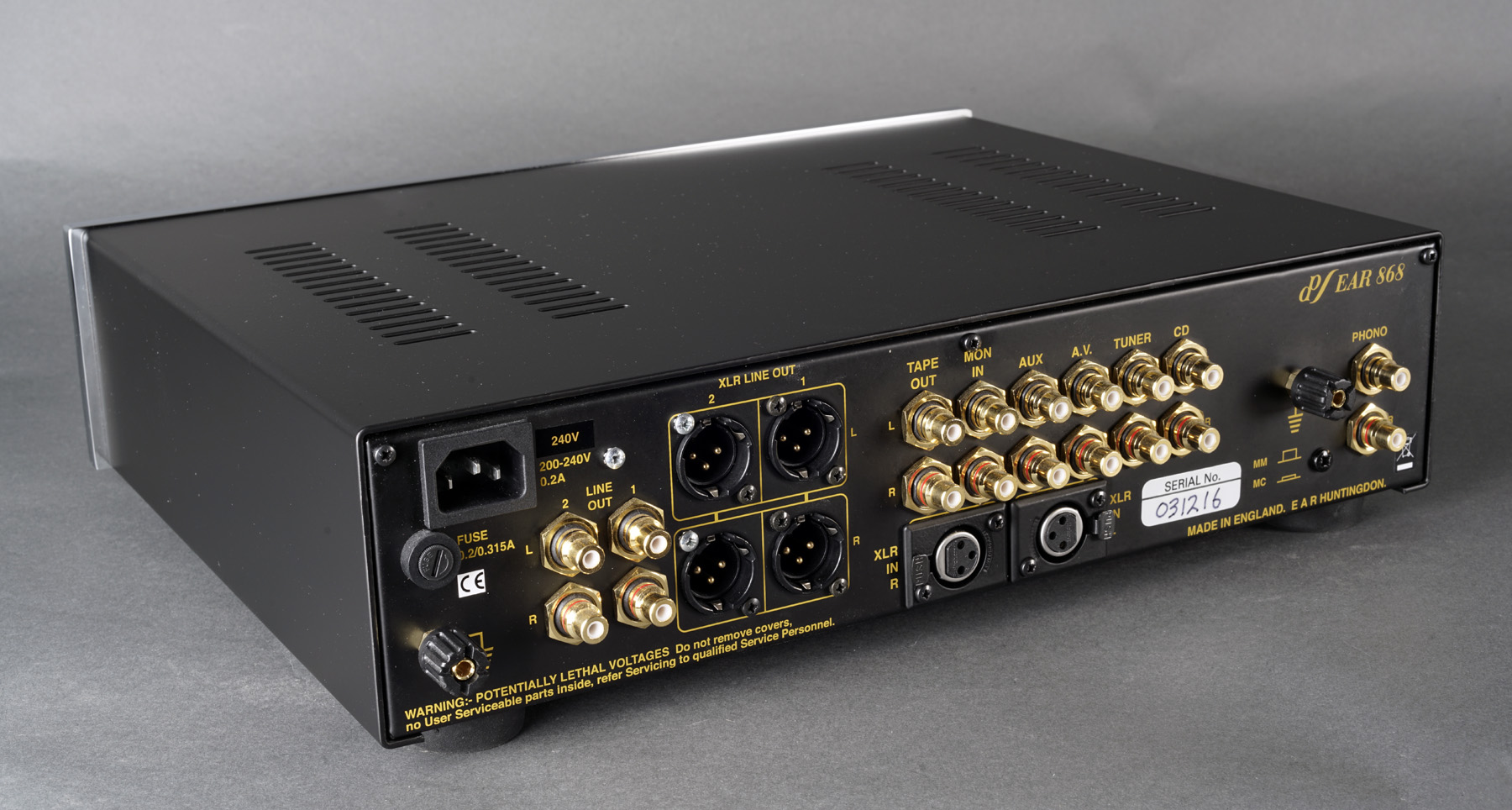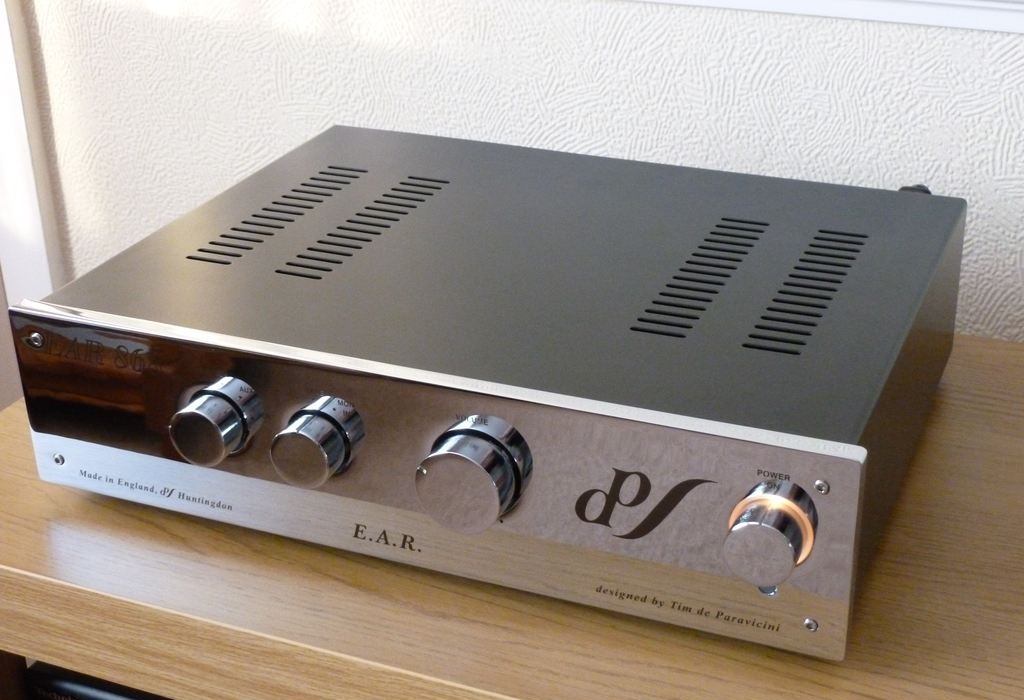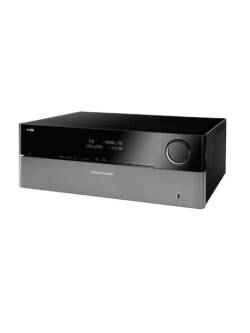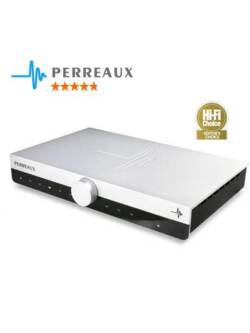EAR 864 Preamplifier
Original price was: R118,000.00.R35,000.00Current price is: R35,000.00.
This is one of the BEST valve pre-amplifiers I have used in a very long time. The Phonostage is exquisite!!
Definite 8.9/10!
http://www.valljud.se/uploads/images/pdf/Review_hifi_world_ear864.pdf

EAR 834P – WHERE IT ALL BEGAN
Terrifyingly, it was far back as mid-1994 that I reviewed the EAR 834P, and I’ve been using it as my ‘real world’ reference phono stage ever since. This unit is still available, showing admirable longevity. And why not? It now seems that this venerable phono section is good enough to serve as the (analogue) heart of a very modern, very Y2K full-function pre-amp. As is obvious from the photo of the EAR 864, the agricultural look of the 834P has been discarded in favour of the EAR/Yoshino house-style of a massive chromed faceplate, gilded knobs and no sense of cost-cutting whatsoever.
A simple black box measuring 95x124x275mm (HWD), the 834P is deliberately small move to allow positioning alongside an existing pre-amp without the loss of much shelf space. All it bears is a rotary on-off control or, if ordered with the optional gain control, a rotary volume control. The back contains a fuse holder, IEC mains input, a multi-way earthing post, gold-plated sockets for phono in/out and a press button for m-c or mm cartridges. Three ECC83s make up the valve complement, its unregulated power supply is a small toroidal transformer and the components reside on a main PCB. Output is line level, the mm input is a standard 47k ohm and the mc setting a nominal 5-50 ohm impedance, adding 20dB of gain. In the interests of quietness, m-c gain is via transformers rather than active step-up devices. Note that in the EAR 864, the phono section is equivalent to the EAR 834P’s mm stage, without an extra m-c step-up level, but the gain was more than enough to allow the use of the Linn ARKIV without having to resort to playing the 864 at ’11’.
I described the 834P’s performance thusly: ‘In a word: wonderful. As with all tube bargains…there’s a certain price to pay in absolute detail and background silence. The 834P, though, swings so fluidly and has such wide dynamics that you just don’t notice the barely audible background hash. Hell, most surface whoosh is so much louder than the 834P’s own noise that the LP will mask it.
‘What distinguishes the 834P from solid-state phono stages are the sense of openness, scale and three-dimensionality. While it’s easy to better the retrieval of detail…it’s hard to match the warmth and the “analogueness” of the 834P. It’s a great soundstager, a strong defender of the analogue argument and (for those who cherish this one aspect of LP playback above others) the source of some of the sweetest bass I’ve heard in years. As for vocals, all I can do is s-i-g-h-h-h.’
Before even sampling a taste of the 864, I let it burn in for a day. This is now par for my course regardless of product type or manufacturer’s instructions; even the ones who don’t believe in run-in periods can’t complain because I pay the electricity bill. And, when I finally could resist no longer, I was treated to what I had hoped I would hear: a grown-up, no-compromise, silent, perfectly-behaved 834P which also happens to have a fistful of line inputs. And anyone who’s ever used an EAR product will recognise the sound immediately just by the bass.
Tim has dialled in the kind of weight and precision which transistor guys swear you just can’t get from tubes. And, given the amount of bass produced by a brace of Puppies in a room only 4x6m, I covet all the control a system can muster. There’s no sense of bass truncation, the EAR letting you hear way down into John Entwistle’s ever-deft fingering on the MoFi-remastered Who’s Next. Indeed, so impressive was the speed and clarity of the lower-octave info that I even pulled out the vinyl original of ‘Boris the Spider’ and – shock! horror! – some of those deservedly-maligned Japanese audiophile crossover jazz albums of the late 1970s. I was reminded why we put up with such mind-numbing ambient drivel: the sound was, simply, in the room. Preferring to review while conscious, I heard the EAR cut through the mire on Nirvana’s ‘Smells Like Teen Spirit’, separating to great effect all that was going on behind the late Mr C.

But the EAR was also a lesson in understanding why guys like Kavi Alexander of Water Lily want Tim’s gear in their studios. No, I’m not saying that there are EAR 864s in studios around the globe, but Tim’s thinking pervades everything he makes. Using the latest Water Lily title, Jon Hassell’s Fascinoma, as delicate a release as the label has issued, I was able to picture Kavi twiddling the knobs with added precision thanks to the abundance of information flowing through. But for me, the two things which make me love the 864 more than the 834P are its retention of the latter’s soundstage and mid-band ear-friendliness, while acting with the authority of a studio tool.
To Tim, I can only beg two things: First, would you issue a version for 1999 called the 864R, with remote controlled volume? And second, will you please make a balanced input stereo power amp – say 35W/ch – for 1445 to match it in size, cost and intent? Other than that, Tim, your reputation is intact.
Description
Specifications
Frequency response: 20Hz to 20kHz
Input sensitivity: 2.2mV (MM), 200mV (line)
Signal to noise ratio: 80dB (line)
Output: 8V (Pre out Max)
Valve complement: 1 x ECC82, 4 x ECC83
Dimensions: 380 x 305 x 100mm
Weight: 5kg
Year: 1999
